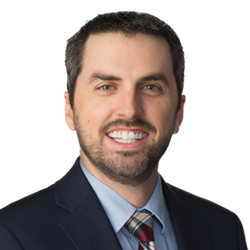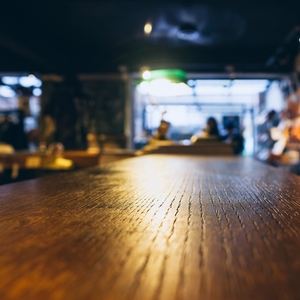Insurance Claims in the time of COVID-19
ABSTRACT: A recent Pennsylvania Supreme Court decision upholding COVID-19 stay-home order could provide a preview of the battle lines between business policyholders and insurers regarding what constitutes "property damage" for business interruption insurance policies.
Business interruption insurance is a hot topic in insurance coverage law. Most policies afford coverage for lost income only if the business has sustained “property damage.” Property damage is typically defined to mean direct physical injury to tangible property. Policyholders seeking to obtain coverage for COVID-19 stay-home orders may seek to leverage a recent Pennsylvania Supreme Court decision in a case not related to insurance to advance the argument that COVID-19, and/or governmental stay-home orders, has caused “property damage.” In that case, the Pennsylvania Supreme Court found that any location, including an individual business, is within a disaster area. We expect policyholders to argue that their business have, thus, arguably sustained “property damage,” triggering their coverage.
In Friends of DeVito, et al. v. Tom Wolf, Governor, et al. 2020 WL 1847100 (PA, April 13, 2020), the Pennsylvania Supreme Court shot down a lawsuit challenging Gov. Tom Wolf’s authority under state law to order “non-life-sustaining” businesses to shut down as a means of reducing the spread of COVID-19. The challengers in the case included Republican state legislative candidate, a public golf course, and a licensed realtor. They all argued that Gov. Wolf lacked authority to issue his Executive Order because the COVID-19 pandemic did not fall under the list of natural disasters outlined in the State’s emergency code.
The Pennsylvania Emergency Code defines “natural disaster” as:
Any hurricane, tornado, storm, flood, high water, wind-driven water, tidal wave, earthquake, landslide, mudslide, snowstorm, drought, fire, explosion or other catastrophe which results in substantial damage to property, hardship, suffering or possible loss of life.
While this code points to specific disasters (i.e., hurricane, tornado, storm etc.…), it also includes a catchall phrase for any “other catastrophe which results in substantial damage to property, hardship, suffering or possible loss of life.”
The challengers argued that pandemics could not be classified as a “natural disaster” under this code because they are too dissimilar to the natural disasters specifically listed. However, the Pennsylvania Supreme Court disagreed, noting that there was no commonality among the listed natural disaster in the code as some were weather-related and others, were not.
Most importantly, and the interesting language we are tracking, the Pennsylvania Supreme Court went on to hold that COVID-19 is a “natural disaster” because it “results in substantial damage to property, hardship, suffering or possible loss of life.” Because the virus is spread from person-to-person contact, has an incubation period of up to fourteen days and can live on surfaces for up to four days, any location, including an individual business, is within a disaster area and is thus damaged. Additionally, the Pennsylvania Supreme Court rejected the argument that the actual presence of the disease at a specific location was required before it could be shutdown, thus holding that all properties were damaged because of the manner in which the disease spreads. This could have implications in policy interpretation regarding physical damage.
In enforcing the governor’s authority, the court held that the “COVID-19 pandemic is, by all definitions, a natural disaster and a catastrophe of massive proportions.” We expect that policyholders may argue that the Pennsylvania Executive Order, like many other State’s orders, is a declaration that business property has been damaged and is unsafe due to the Coronavirus. Because policyholders have the burden of proving that a loss is within a policy’s insuring agreement, we expect to see a multitude of approaches to try to bring COVID-19 business disruptions within the ambit of “property damage,” and the Pennsylvania Supreme Court, while addressing right-to-assemble claims, may have provided one argument that we could see advanced in the skirmishes over coverage for business interruption losses.
It should be noted that Pennsylvania, New York, Massachusetts, Ohio, and New Jersey have proposed legislation prohibiting insurers from denying business interruption claims for losses caused by COVID-19 to small business in their respective states. However, Congress is also considering legislation that would cap the insurance industry’s exposure to COVID-19 pandemic claims. We will continue to monitor this ever changing, fluid situation.
related services
About Insurance Law Blog
Baker Sterchi's Insurance Blog examines topics and developments of interest to insurance carriers, with a particular focus on Missouri, Illinois and Kansas law. Learn more about our blog editors, Richard Woolf and Philip Sumner, and our Insurance practice.
Subscribe via email
Subscribe to rss feeds
RSS FeedsABOUT baker sterchi blogs
Baker Sterchi Cowden & Rice LLC (Baker Sterchi) publishes this website as a service to our clients, colleagues and others, for informational purposes only. These materials are not intended to create an attorney-client relationship, and are not a substitute for sound legal advice. You should not base any action or lack of action on any information included in our website, without first seeking appropriate legal or other professional advice. If you contact us through our website or via email, no attorney-client relationship is created, and no confidential information should be transmitted. Communication with Baker Sterchi by e-mail or other transmissions over the Internet may not be secure, and you should not send confidential electronic messages that are not adequately encrypted.
The hiring of an attorney is an important decision, which should not be based solely on information appearing on our website. To the extent our website has provided links to other Internet resources, those links are not under our control, and we are not responsible for their content. We do our best to provide you current, accurate information; however, we cannot guarantee that this information is the most current, correct or complete. In addition, you should not take this information as a promise or indication of future results.
Disclaimer
The Insurance Law Blog is made available by Baker Sterchi Cowden & Rice LLC for educational purposes only as well as to give you general information and a general understanding of the law, not to provide specific legal advice. Your use of this blog site alone creates no attorney client relationship between you and the firm.
Confidential information
Do not include confidential information in comments or other feedback or messages related to the Insurance Law Blog, as these are neither confidential nor secure methods of communicating with attorneys. The Insurance Law Blog should not be used as a substitute for competent legal advice from a licensed professional attorney in your state.













